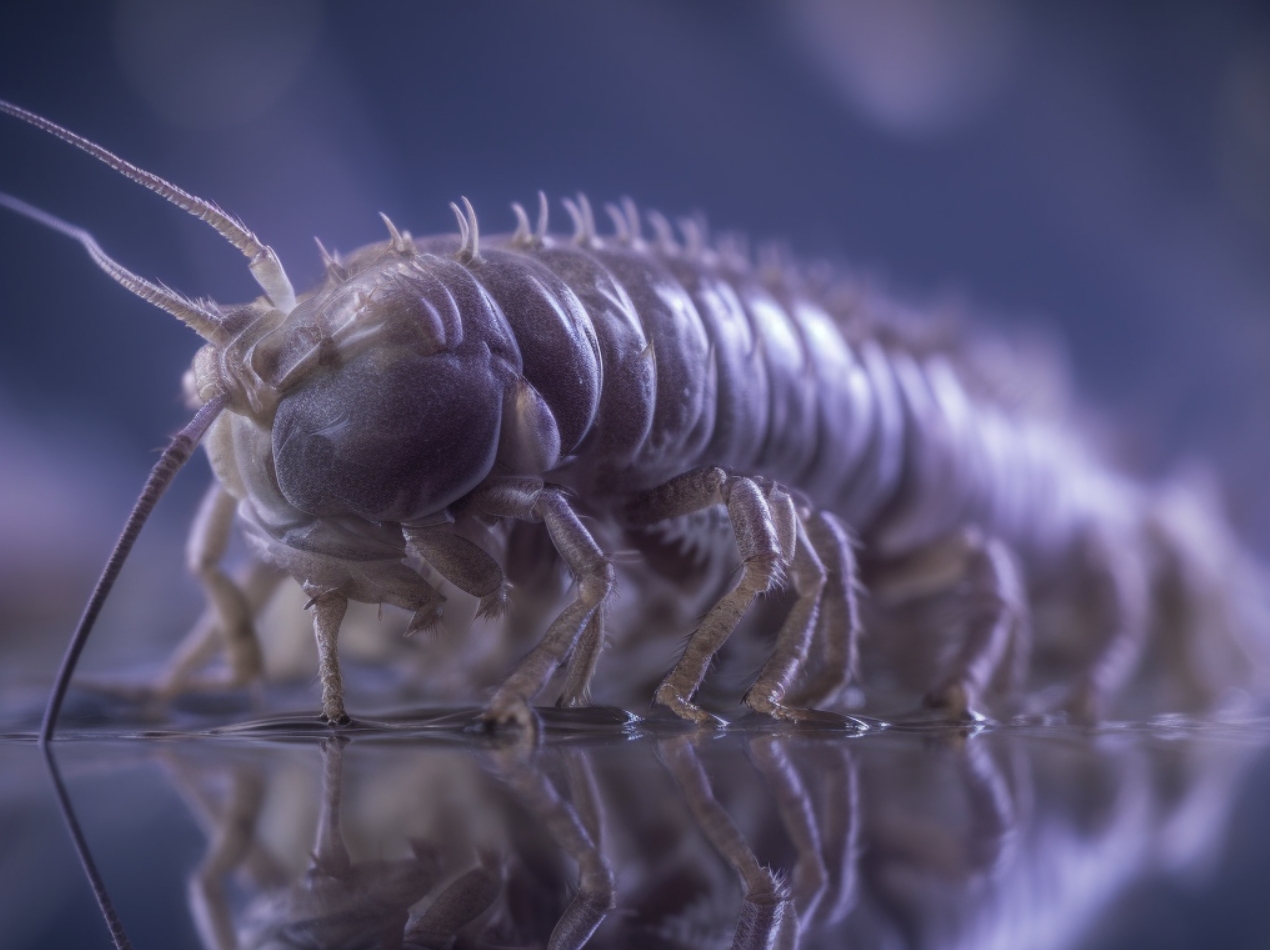Woodlice are small, unassuming creatures that many people have encountered in their homes. While they might not be the most pleasant sight, they’re not usually harmful. But that doesn’t mean you should ignore them. If you’ve been asking yourself, “Why am I getting woodlice in my house?”, you’ve come to the right place.
In this comprehensive guide, we’ll take an in-depth look at why woodlice enter our homes, how they might be causing problems, and the best ways to tackle these pesky intruders. We’ll also explore some popular brands that can help you control woodlice in your home. So, let’s get started!
Understanding Woodlice: What Are They, And Why Do They Enter Our Homes?
Contents
Woodlice, also known as pillbugs, roly-polies, or sowbugs, are small, crustaceans that belong to the order Isopoda. They’re typically found in damp, dark environments and feed on decaying organic matter. To understand why you might be getting woodlice in your house, it’s essential to know what attracts them in the first place.
Attraction Factors:
- Moisture: Woodlice are attracted to damp conditions, as they require moisture to survive. If your home has high humidity levels or there are areas with water leaks or poor ventilation, you may find woodlice making themselves at home.
- Organic Matter: As decomposers, woodlice love munching on decaying organic material. Homes with rotting wood, piles of leaves, or damp cardboard provide an ideal environment for these critters to thrive.
- Shelter: Woodlice seek shelter from predators and harsh weather conditions. Cracks and crevices in walls, foundations, or under debris in your home can provide the perfect hiding spots.
- Access Points: If your home has gaps, cracks, or open vents, woodlice can easily find their way in.
Now that we know why woodlice might be attracted to your home, let’s discuss the problems they can cause and how to prevent or eliminate them.
Are Woodlice Harmful? Understanding The Risks & Issues They Can Cause
While woodlice aren’t directly harmful to humans or pets, their presence can indicate underlying issues in your home that need to be addressed. Here are some potential problems that woodlice can cause or signal:
- Structural Damage: Woodlice feed on decaying wood, which can cause structural damage to your home if left unchecked.
- Mold & Mildew: The presence of woodlice may indicate moisture issues that can lead to mold and mildew growth, posing health risks for you and your family.
- Allergies: Some people may be allergic to woodlice, causing skin irritation or respiratory issues when exposed to them.
- Unsightly Infestations: A large number of woodlice in your home can be unsightly and may cause discomfort for those who are squeamish.
Now that we understand the potential issues, let’s explore how to tackle woodlice infestations in your home.
Tackling Woodlice Infestations: A Step-By-Step Guide
- Identify the Problem Areas: Inspect your home for areas with high humidity, water leaks, or damp organic material. These are the spots where woodlice are most likely to congregate.
- Eliminate Moisture: Address any moisture issues in your home by fixing leaks, improving ventilation, and using dehumidifiers if necessary. BestPestWorld recommends using high-quality dehumidifiers like Frigidaire or hOmeLabs to maintain optimal humidity levels.
- Remove Organic Material: Clear away any decaying organic material, such as rotting wood, leaves, or damp cardboard, from your home. This will eliminate the food source for woodlice and discourage them from staying.
- Seal Entry Points: Inspect your home’s exterior for gaps, cracks, and open vents that may allow woodlice to enter. Seal these entry points using caulk or other appropriate materials.
- Clean Up and Declutter: Regularly clean and declutter your home, focusing on areas where woodlice may hide, such as basements, garages, or storage spaces.
- Use Pesticides: If you have a significant woodlice infestation, you may need to use pesticides to control their population. Opt for reputable brands like Raid or Ortho to ensure effectiveness and safety.
- Natural Remedies: If you prefer a more natural approach, try using diatomaceous earth, a non-toxic powder that can help control woodlice populations. Brands like Safer and DiatomaceousEarth offer high-quality products for this purpose.
- Monitor and Maintain: Regularly inspect your home for signs of woodlice and address any issues as they arise. This will help prevent future infestations and keep your home woodlice-free.
Prevention Is Key: How To Keep Woodlice Out Of Your Home
While tackling an existing infestation is crucial, preventing future infestations is equally important. Here are some tips to help keep woodlice out of your home:
- Maintain Proper Humidity Levels: As mentioned earlier, using dehumidifiers can help control humidity levels in your home, making it less attractive to woodlice.
- Landscape Maintenance: Keep your yard tidy by regularly raking leaves, trimming shrubs, and removing dead plants. This will reduce potential hiding spots for woodlice outside your home.
- Proper Storage: Store firewood, cardboard boxes, and other organic materials off the ground and away from your home to minimize the risk of attracting woodlice.
- Regular Home Inspections: Regularly inspect your home for signs of moisture issues, rotting wood, or other factors that might attract woodlice. Address any problems as soon as they’re detected.
- Pest Control: Work with a professional pest control company to regularly treat your home for woodlice and other pests. This can help keep infestations under control and prevent future problems.
In Conclusion: Tackle Woodlice Infestations Head-On
Woodlice in your home might not be the most dangerous pests, but they can cause problems and indicate underlying issues. By understanding why woodlice are attracted to your home, you can take the necessary steps to prevent and eliminate infestations.
With the information provided in this guide, you’re now well-equipped to tackle any woodlice issues you may be facing. Remember to address moisture problems, remove organic material, seal entry points, and use reputable brands for dehumidifiers and pesticides. By following these steps, you can keep your home woodlice-free and maintain a healthy, comfortable living space.





